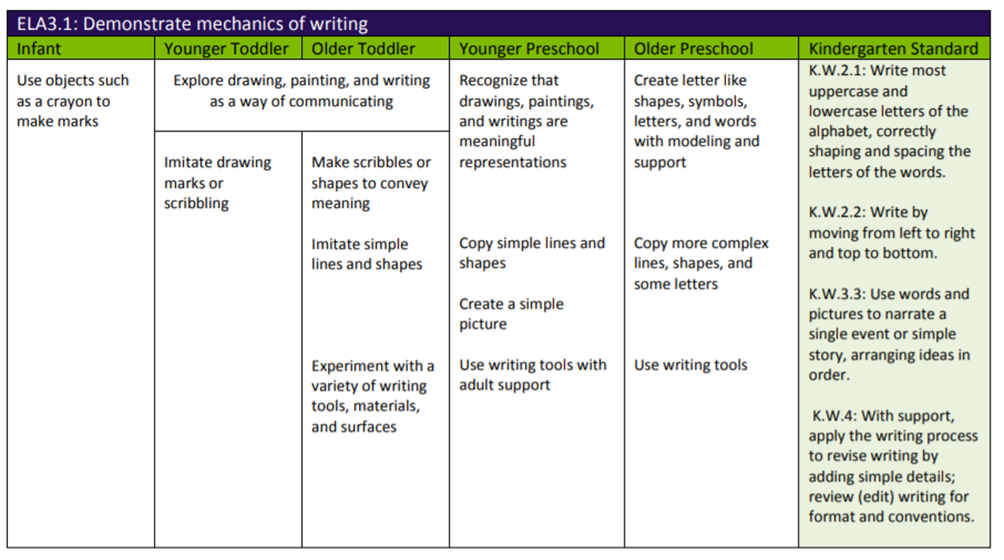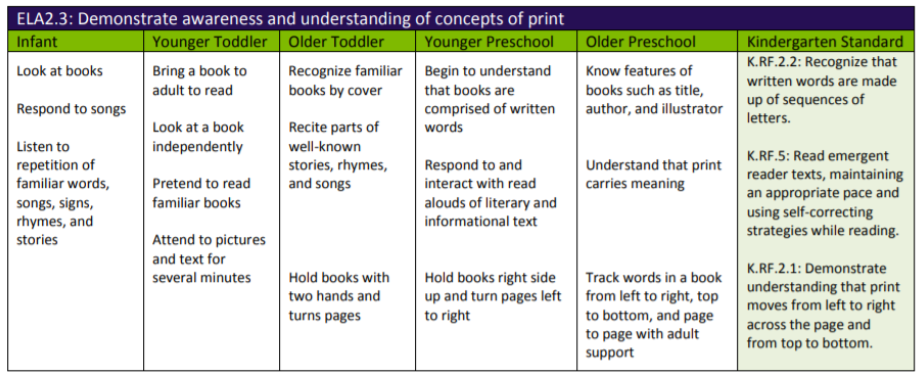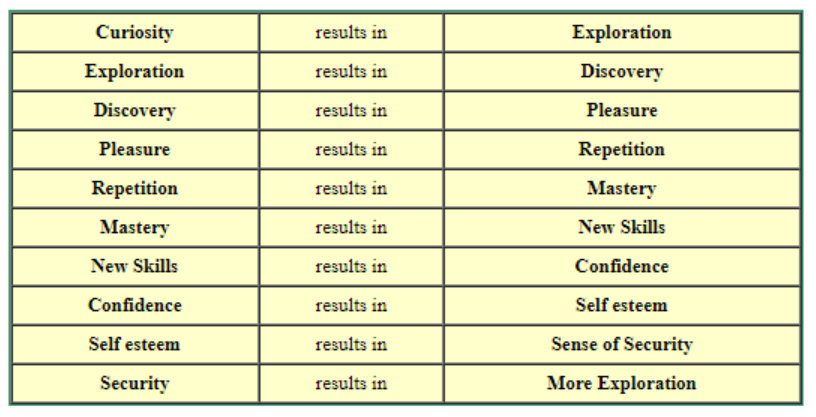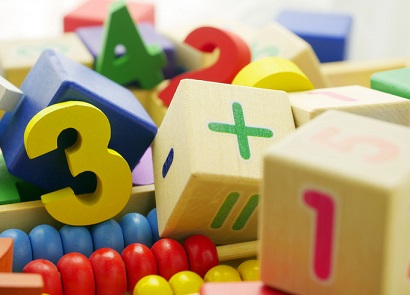“Playful learning [where] children learn targeted information through exploration of a well-designed and structured environment … and through
the support of adults who askopen-ended questions to gently guide the child’s exploration.”
Kathy Hirsh-Pasek & Roberta Michnick Golinkoff
There are a lot of questions about how we prepare children for Kindergarten and First Grade through our model of play-based learning. How do we make sure that children are meeting the standards and ready to move on?
What Standards Are and Are Not
Standards are a target for typically developing children. Standards give us a common language for developmental milestones and allow us to communicate across programs through the state. Standards help us guide parents to what is important and where their child is performing.
Standards are not the end goal and they do not determine the success of any child because EVERY child has strengths and weaknesses, skills, and competencies. Not every child will achieve every standard.
Our teachers follow the NAEYC developmentally appropriate practices for early educators while meeting standards for early education. The two are not mutually exclusive and there is more importance on making sure a program is developmentally appropriate over checking off a box of “standards met.” (Take a moment to look at the Early Learning Standards for Indiana here and here.)
Look at the standards for writing. It’s a standard (and developmentally appropriate) for older preschoolers to be creating letter-like shapes, letters, and symbols with guided support.

Another reading standard is this:

Note how a standard in younger toddlers is simply bringing a book to an adult to be read. Did you ever consider that a milestone?
This is my favorite standard–data analysis. Such an adult sounding concept but it’s something that is very much learned through play:

So how do we meet standards while remaining a child-centered environment?
Through play.
In high-level play, children have the ability to practice multiple standards at once. “Teaching academics” in a restricted way only allows for that one standard to be learned at that moment. But when play is involved–the mind is opened to more experiences and learning. One example is block-play–what can a child learn through playing with blocks?
- Problem-solving
- Imagination
- Self-expression
- Mathematics
- Continuity and permanence
- Creativity
- Science
- Self-esteem
- Social and emotional growth
- Development in all areas
So what about free play? Isn’t that what this school is about?
Our teachers have organized the environments, materials, and procedures for children to work and play. They plan for play with goals and standards in mind, they facilitate play experiences and they schedule for high-level play to develop. Along with their teaching strategies they allow for all children to learn and grow. Our teachers and trained parents play alongside children, model, provide challenges and questions, and help scaffold play. They also know when to exit the play, how to step back, and how to reflect with the children about their play.
What about Social and Emotional Learning (SEL)?
There are several ways in with SEL is incorporated into our preschool classrooms and one of the biggest ways is with conflict resolution. Any classroom will have conflict, but it’s how we model and teach the resolutions that stick with children. Our teachers guide the children (and parents) on the best ways to resolve conflict with lots of guided questions and responses. We make sure to ask children how they are feeling, how they can express their feelings respectfully, what can they do differently, how is my classmate feeling, and how can I adjust myself so that I have good interactions. Of course, this is all done with developmentally appropriate language depending on the children involved.
Why is it important to play now?
Play in the early years provides better cognitive and language performance at age 7. It strengthens cognitive capabilities. Play is the foundation for academics and if the foundation isn’t there then the “house” doesn’t stand! Real academic learning takes place while children play.
“Play supports school readiness and is not separate from learning. A foundation of creating, moving, singing, discussing, observing and reading is held together by play. Play is the cement holding the foundation together, and it is this foundation that will, in turn, support the house of higher learning” (the house of academics).
Play – The Foundations of Children’s Learning by Lisa Murphy (pg. 46)
As you can see, playful learning now is an investment in your child’s future academic success. Play also relieves stress, assists with social and emotional learning, and helps children deal with fears and trauma. Early education is the foundation for all future learning and DOES prepare children for elementary school and beyond! Children should play now because:




